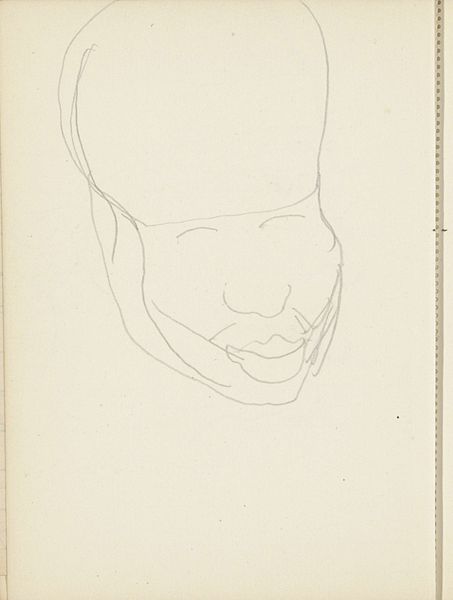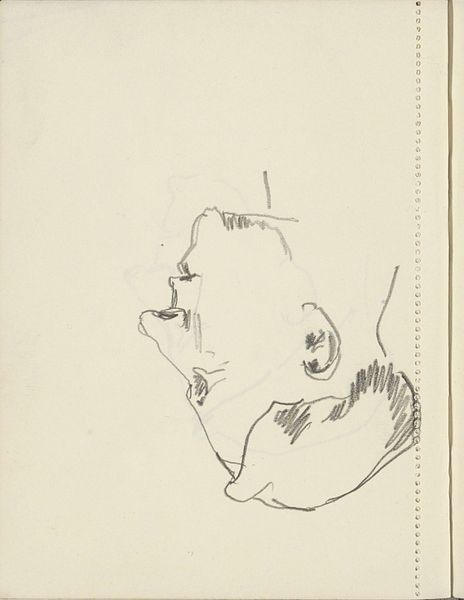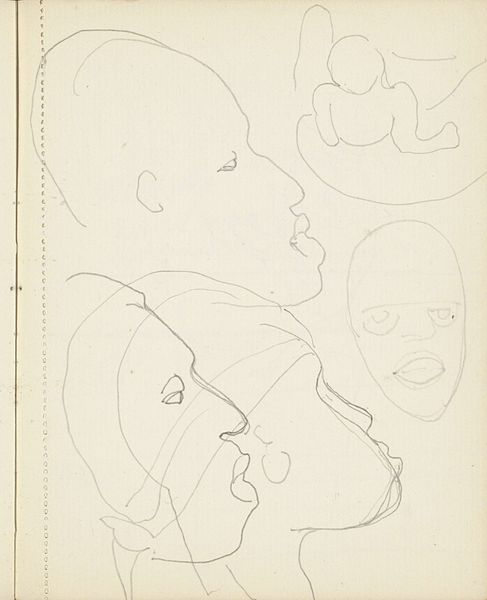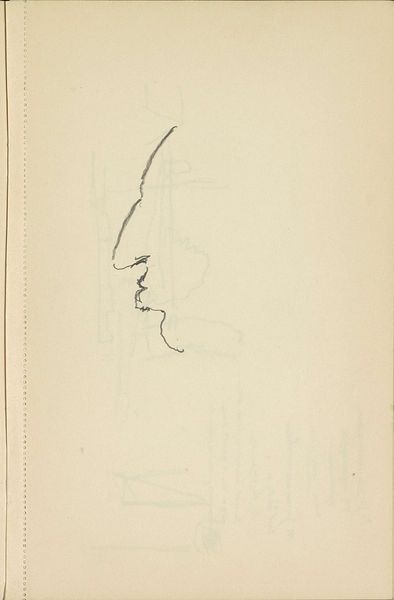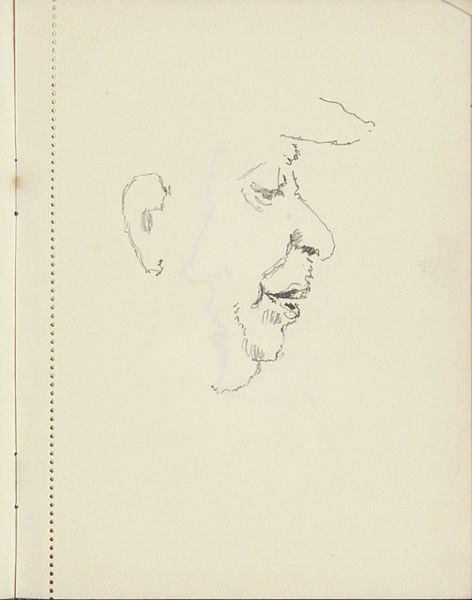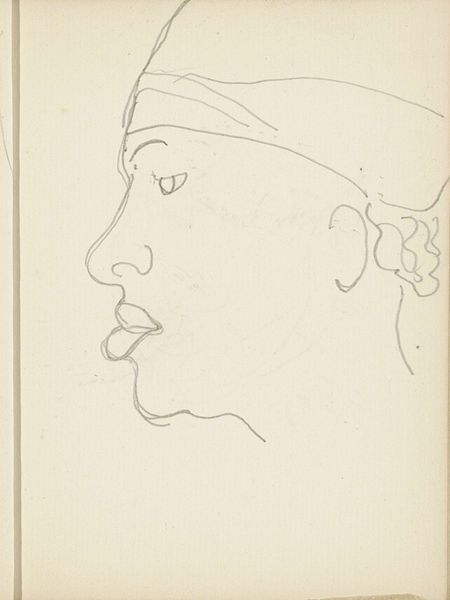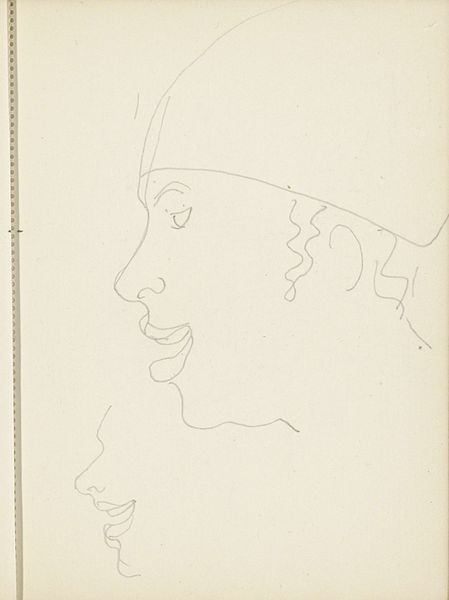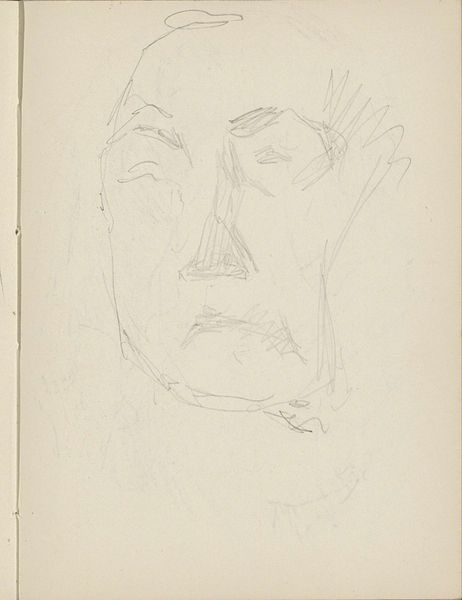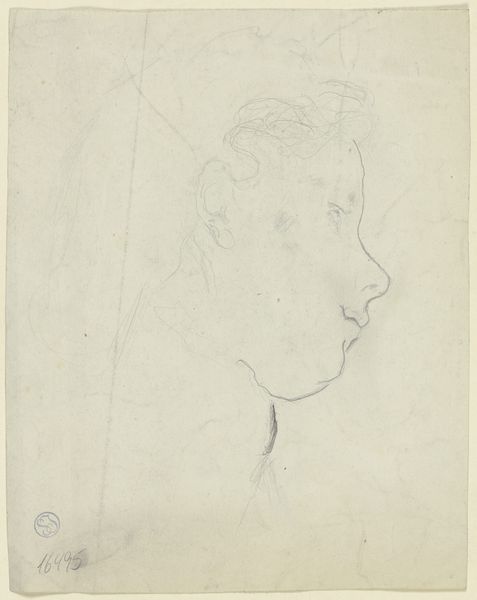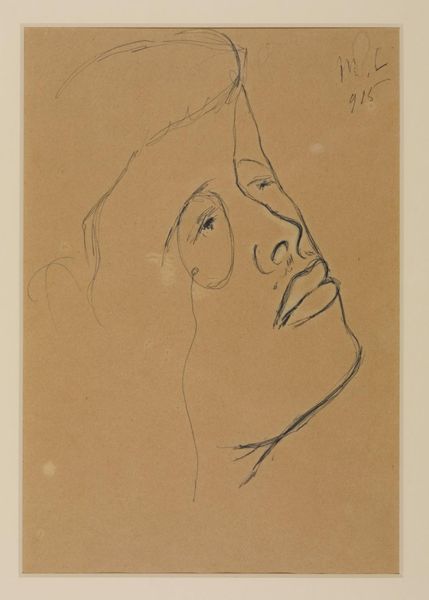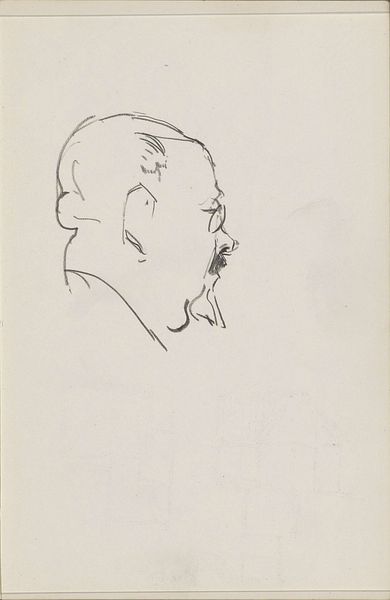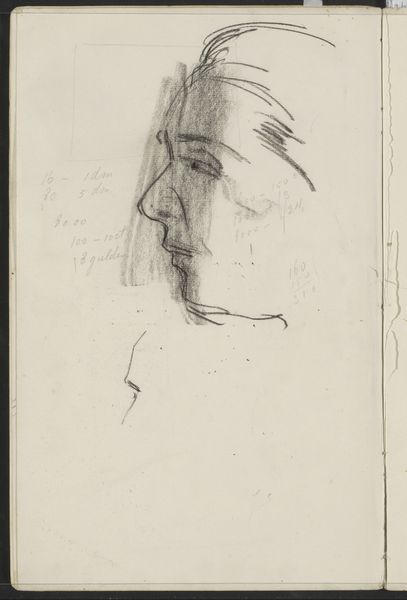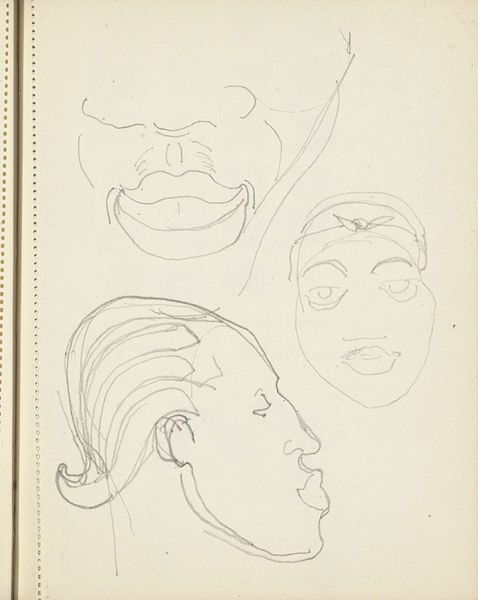
drawing, paper, pencil
#
drawing
#
amateur sketch
#
toned paper
#
light pencil work
#
pencil sketch
#
old engraving style
#
figuration
#
paper
#
personal sketchbook
#
idea generation sketch
#
ink drawing experimentation
#
pen-ink sketch
#
pencil
#
sketchbook drawing
Copyright: Rijks Museum: Open Domain
Curator: Welcome to the Rijksmuseum. Today, we're looking at "Hoofd van een Afrikaanse vrouw," or "Head of an African Woman," a drawing that likely dates sometime between 1916 and 1945. Editor: It's surprisingly delicate. The pencil lines are so light, almost tentative. The use of toned paper gives it a softness, a quiet, almost introspective mood. Curator: The handling of line certainly creates a specific affect. What is most interesting is the ethnographic context in which the work appears. Drawings and sketches like this one were often made in sketchbooks by European artists during this period. What ideological forces were at play when deciding to depict the "exotic other?" Editor: And isn't the almost academic style somewhat jarring? The piece flirts with an objectifying gaze, typical for that period, yet there's a sensitivity in the lines, especially around the eyes, which gives it a layer of ambiguity. The light pencil work softens a potentially harsh profile into something more nuanced. Curator: The sketch, in and of itself, carries that inherent tension: that personal intimacy battling against social conventions and perceived differences. The drawing's placement within the sketchbook also prompts a viewer to consider it as more of an artistic exercise or spontaneous study instead of an intended finalized artistic creation. The formal qualities underscore an interesting paradox with broader colonial-era portraiture traditions. Editor: Exactly. It's an incomplete image, not highly rendered. But the delicate interplay between light and shadow makes the face feel present and knowable despite it being unfinished. I am stuck on that sense of vulnerability. Curator: I agree; it speaks volumes about the politics of observation and artistic intentions within the confines of a sketchbook during the first half of the twentieth century. Editor: An exercise in style, context, and visual interpretation; a potent, subtle reminder of an era seen through the prism of simple lines.
Comments
No comments
Be the first to comment and join the conversation on the ultimate creative platform.
